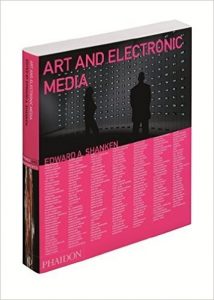Bicycle Built For 2,000 is a collaborative artwork in the form of a song comprised of 2,088 voice recordings collected via Amazon’s Mechanical Turk web service. Workers were prompted to listen to a short sound clip, then record themselves imitating what they heard. The recorded sound clips were collected and organized into the original pattern.
The song “Daisy Bell,” originally written by Harry Dacre in 1892, was made famous in 1962 by John Kelly, Max Mathews, and Carol Lockbaum as the first example of musical speech synthesis. At the end of the movie ‘2001: A Space Odyssey‘ (1968), the computer/cyborg HAL is singing ‘Daisy Bell’. In contrast to the 1962 and 1968 versions, Bicycle Built For 2,000 was synthesized with a distributed system of human voices from all over the world.
Bicycle Built For 2,000 can be listened to here. By clicking ‘Computer’ you can listen to the computerized speech version wich parts where sent to the workers.
Via Amazon’s Mechanical Turk web service, people from 71 different countries (The top ten were the United States, India, Canada, United Kingdom, Macedonia, Philippines, Germany, Romania, Italy, and Pakistan.) where collectively put to work. These workers were asked to imitate what they heard, they were not given any additional information about the project. Every worker was paid $0.06 USD for his efforts. [1]
Relations to other artworks
Bicycle Built For 2,000 is most similar to an older and perhaps more interesting art project by Aaron Koblin, entitled Ten Thousand Cents (2008, see linked entry); “Ten Thousand Cents is a digital artwork that creates a representation of a $100 bill. Using a custom drawing tool, thousands of individuals working in isolation from one another painted a tiny part of the bill without knowledge of the overall task. Workers were paid one cent each via Amazon’s Mechanical Turk distributed labor tool. The total labor cost to create the bill, the artwork being created, and the reproductions available for purchase (to charity) are all $100. The work is presented as a video piece with all 10,000 parts being drawn simultaneously. The project explores the circumstances we live in, a new and uncharted combination of digital labor markets, “crowdsourcing,” “virtual economies,” and digital reproduction.” [2]
Both artworks can be compared to Andy Deck’s Glyphiti (2001, see linked entry), which also employs mass-collaboration. A vital difference however, is that the participants/creators in Glyphiti knew what they were doing. Since the ‘workers’ in Koblin’s art projects were not aware of the goal of their input, and on top of that were paid to participate, one could call the collaboration slightly involuntary. This practice can also be seen in light of the traditions of networks and culture jamming. By keeping the workers in the dark, Koblin and Massey have succeeded in realizing the exact opposite of what Roy Ascott enthusiastically theorized as ‘Network Consciousness’ (1984). [3] Bicycle Built for 2,000 seems to be making a much more sober, if not somber, commentary on the potential of computer networks to exploit, rather than liberate, users. The bicycle is, arguably, built for only two – the artists themselves – through the menial labor of 2,000 low-paid, anonymous creators.
More information about the project, Bicycle Built For 2,000, can be found here.
More information about the artist, Aaron Koblin, can be found here.
More information about the artist, Daniel Massey, can be found here.
References
[1] Bicycle Built For 2,000 Website, <http://www.bicyclebuiltfortwothousand.com/>
[2] Ten Thousand Cents Website, <http://www.tenthousandcents.com/top.html>
[3] Roy Ascott, “Art and Telematics: Toward a Network Consciousness,” in Edward Shanken, red. Art and Electronic Media. London: Phaidon, 2009: p. 231
